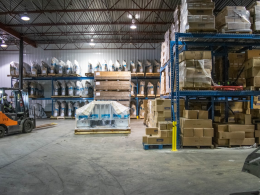Introduction
In today’s competitive global marketplace, businesses thrive not only by offering quality products but also by ensuring timely delivery. Whether you are a small e-commerce retailer or a large multinational corporation, managing lead times has become a decisive factor in customer satisfaction and operational efficiency. From the moment an order is placed to the final doorstep delivery, companies must overcome multiple challenges—manufacturing delays, customs clearance, shipping bottlenecks, and last-mile distribution hurdles. Many businesses turn to a trusted china sourcing agent to streamline operations and reduce unnecessary delays when working with overseas suppliers.
This article explores the intricacies of lead time management, breaking down every stage of the journey. We will analyze key challenges, best practices, and strategies that businesses can employ to ensure efficiency in order fulfillment while keeping customers satisfied.
Understanding Lead Time
Lead time refers to the total duration between a customer placing an order and the order being delivered. It is a composite measure that combines production time, processing, shipping, customs clearance, and final delivery.
Types of Lead Times
- Order Lead Time: The time between a customer placing an order and the acknowledgment of that order.
- Production Lead Time: The duration needed to manufacture or assemble the product.
- Shipping Lead Time: The period taken to transport goods from the supplier to the buyer’s location.
- Delivery Lead Time: The final stage, covering warehouse handling and last-mile delivery.
Each of these subcategories adds to the overall lead time, and any disruption in one stage can cascade into significant delays.
Factors That Influence Lead Times
Several factors contribute to the efficiency—or inefficiency—of lead times.
- Supplier Reliability: Suppliers with consistent quality standards and timely output greatly reduce production delays. Unreliable suppliers often lead to backlogs, rework, or even cancelled orders.
- Geographical Distance: The further the manufacturing source is from the customer, the higher the shipping lead time. This is why sourcing location decisions are critical.
- Customs and Regulations: International shipping involves customs inspections, paperwork, and compliance with regulations, all of which can add days or weeks to delivery times.
- Logistics Infrastructure: The quality of roads, ports, shipping carriers, and last-mile delivery networks plays a huge role in ensuring on-time deliveries.
- Unforeseen Disruptions: Events like natural disasters, global pandemics, or strikes at shipping ports can cause sudden and severe disruptions.
The Order Processing Phase
The lead time clock starts ticking the moment a customer places an order. Efficient order processing ensures faster transitions into production.
1. Key Steps in Order Processing
- Order Verification: Checking customer details, product availability, and payment confirmation.
- Inventory Check: Determining if stock is available or if fresh production is required.
- Documentation: Generating invoices, purchase orders, and confirmations.
2. Best Practices
- Automating order processing reduces errors and cuts down on manual handling.
- Centralized inventory systems allow real-time visibility, preventing stockouts or overstocking.
- Prioritization of urgent orders ensures customer satisfaction and loyalty.
3. Production and Manufacturing Lead Times
Production delays are among the biggest contributors to extended lead times. Efficient production planning is vital to ensure that manufacturing aligns with order volumes.
4. Challenges in Production
- Raw material shortages
- Machine breakdowns
- Skilled labor availability
- Large-scale customization demands
5. Solutions
- Lean Manufacturing: Reduces waste and focuses on efficiency.
- Forecasting Demand: Helps manufacturers prepare in advance for peak seasons.
- Supplier Collaboration: Ensures timely supply of raw materials and parts.
Shipping and Transit Times
Once the products are manufactured, the next challenge lies in shipping. Whether goods are transported via sea, air, or land, transit times play a critical role in managing expectations.
1. Sea Freight
- Cost-effective for bulk shipments
- Longer lead times (20–40 days depending on routes)
2. Air Freight
- Faster delivery times (2–7 days)
- More expensive, suited for high-value or urgent goods
3. Rail and Road Transport
- Increasingly popular for regional trade
- Flexible but dependent on infrastructure and border regulations
Alibaba vs. Direct Sourcing: A Side-by-Side Comparison
| Criteria | Alibaba & Similar Platforms | Direct Sourcing |
| Accessibility | Easy online access for anyone | Requires effort, local knowledge, or agent support |
| Product Variety | Huge catalog of ready-made products | Focused but customizable |
| Quality Assurance | Inconsistent, depends on supplier | Strong with inspections and audits |
| Customization | Limited unless large orders | High flexibility with manufacturers |
| Cost | Low initial cost but risk of markups | Competitive pricing long-term |
| Scam Risk | Higher due to unverified suppliers | Lower with verified sourcing |
| Relationship Building | Transactional | Collaborative, long-term partnerships |
When to Choose Alibaba
- If you are a small startup testing an idea.
- When you need quick access to samples or small trial orders.
- For products with less emphasis on long-term quality or branding.
- If you lack the resources to invest in large-scale sourcing efforts at the start.
When to Choose Direct Sourcing
- If your business requires strict quality control and compliance.
- When customization, branding, or unique product designs are essential.
- If you are planning long-term growth and want to build lasting supplier relationships.
When you want to reduce the risks of counterfeit products or scams.
Customs Clearance and Regulatory Compliance
One of the most unpredictable phases of international lead times is customs clearance. A minor documentation error can result in significant delays.
1. Common Issues in Customs
- Incomplete paperwork
- Misclassification of goods
- Tariff disputes
- Quarantine and inspections
2. Best Practices
- Preparing documents accurately and in advance
- Using licensed customs brokers
- Staying updated on changing import-export regulations
3. Warehousing and Distribution
After products clear customs, they often move to regional warehouses before reaching customers.
4. Key Functions of Warehousing
- Storage and inventory management
- Quality checks and repackaging
- Consolidation of orders for efficient last-mile delivery
5. Challenges
- Overcrowded warehouses leading to slow order dispatch
- Poor warehouse management systems
- Rising costs of storage
Last-Mile Delivery: The Final Hurdle
The last-mile stage is often the most expensive and complex part of logistics. It directly affects customer satisfaction since it is the only stage where the customer interacts with the service.
1. Common Challenges
- Traffic congestion in urban areas
- Remote locations in rural areas
- Failed delivery attempts
2. Solutions
- Route optimization software
- Partnerships with local delivery services
Real-time tracking for customers
Strategies to Shorten Lead Times
Reducing lead times is not just about speeding up one stage—it requires an integrated approach across the entire supply chain.
- Supplier Relationship Management: Strong partnerships with suppliers foster reliability and faster responses to changing demands.
- Inventory Buffering: Keeping safety stock helps prevent delays caused by unexpected spikes in demand.
- Technology Integration: Using ERP (Enterprise Resource Planning) systems ensures transparency and synchronization across departments.
- Multiple Sourcing Options: Diversifying suppliers across regions can help mitigate risks of delays.
- Outsourcing to Professionals: Businesses often improve efficiency by Sourcing From China through experienced agencies that specialize in managing suppliers, logistics, and negotiations.
Case Study: How E-Commerce Giants Manage Lead Times
Global e-commerce leaders like Amazon and Alibaba have set benchmarks in managing lead times. Their strategies offer valuable insights for other businesses.
- Automation: High reliance on AI and robotics for warehouse operations.
- Fulfillment Centers: Strategic placement of regional warehouses closer to consumers.
- Data-Driven Decisions: Forecasting tools that anticipate demand and adjust inventory accordingly.
- Customer Communication: Proactive updates on delivery status reduce anxiety and increase trust.
Future Trends in Lead Time Management
As consumer expectations rise, businesses must innovate continuously.
- Drones and Autonomous Vehicles: Promising faster and more cost-efficient last-mile delivery.
- Blockchain for Transparency: Ensures end-to-end visibility across the supply chain.
- Green Logistics: Sustainable methods such as eco-friendly packaging and carbon-neutral shipping options.
- AI-Powered Forecasting: Predicts disruptions and adjusts strategies proactively.
Conclusion
Managing lead times effectively is no longer optional; it is essential for competitiveness and customer satisfaction. From the moment an order is placed until it reaches the customer’s doorstep, every phase presents opportunities and challenges. By embracing technology, building strong supplier relationships, and leveraging professional sourcing solutions, businesses can significantly reduce delays and increase efficiency.
Ultimately, the companies that master lead time management not only deliver products—they deliver trust, reliability, and long-term customer loyalty.












